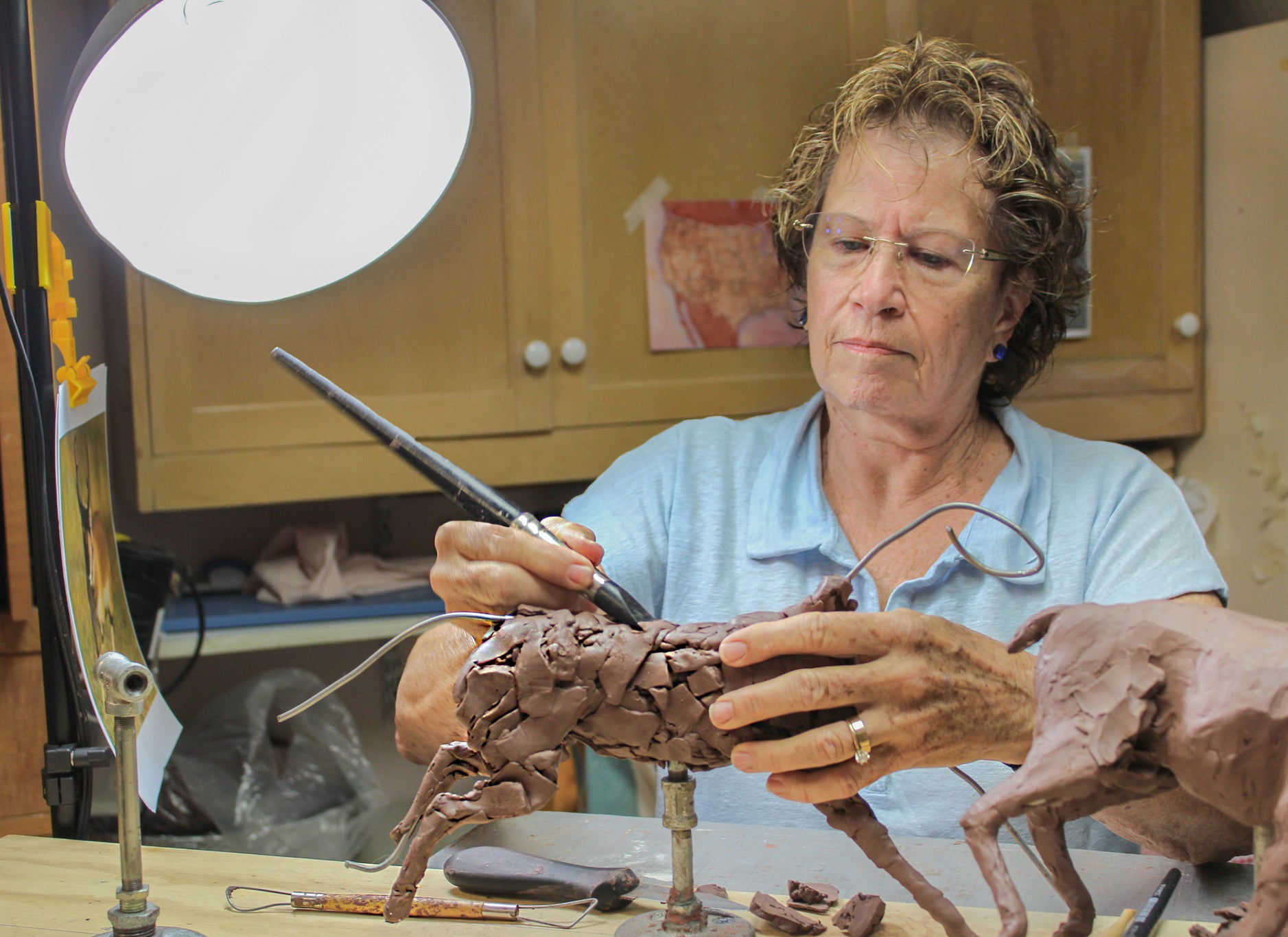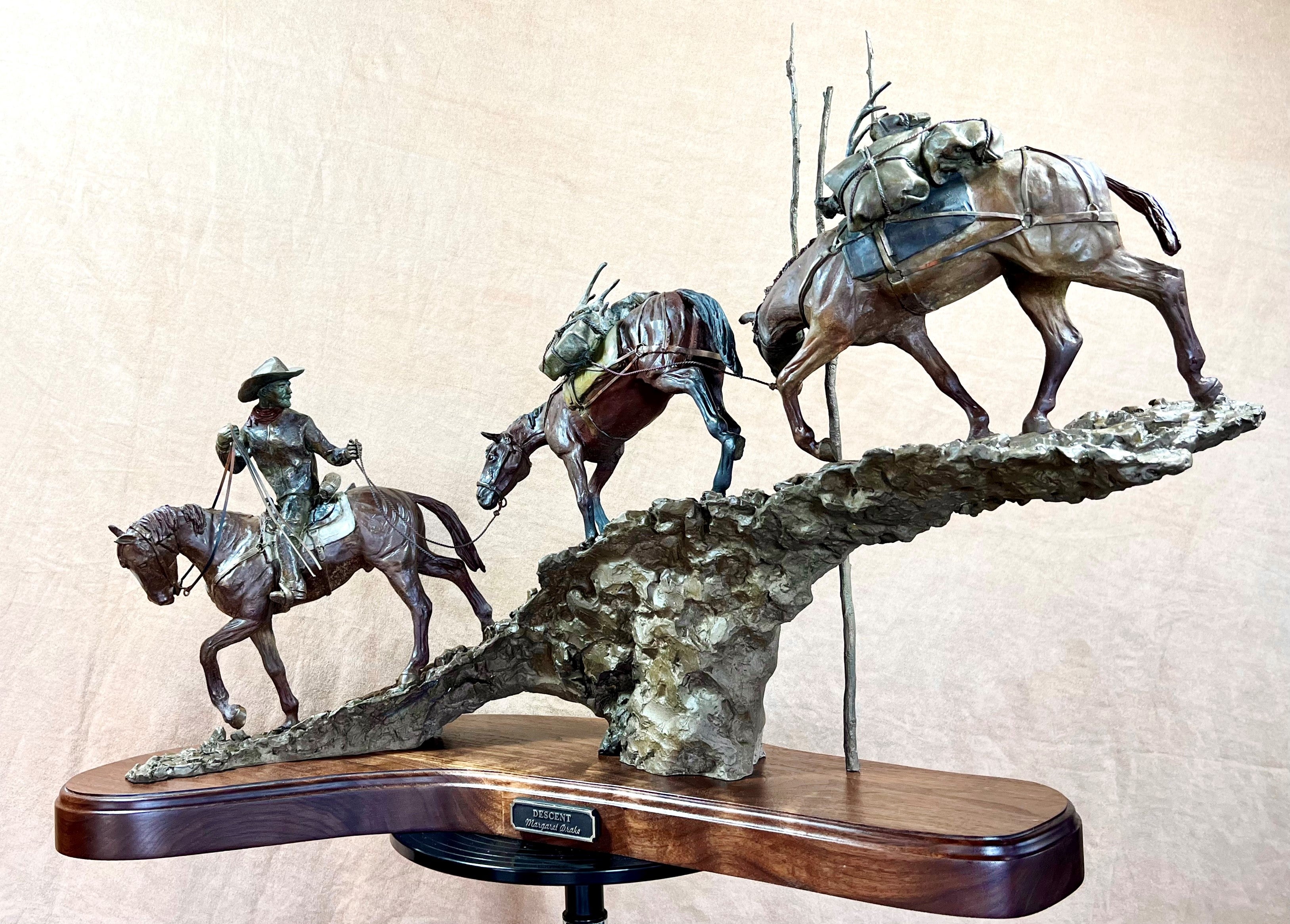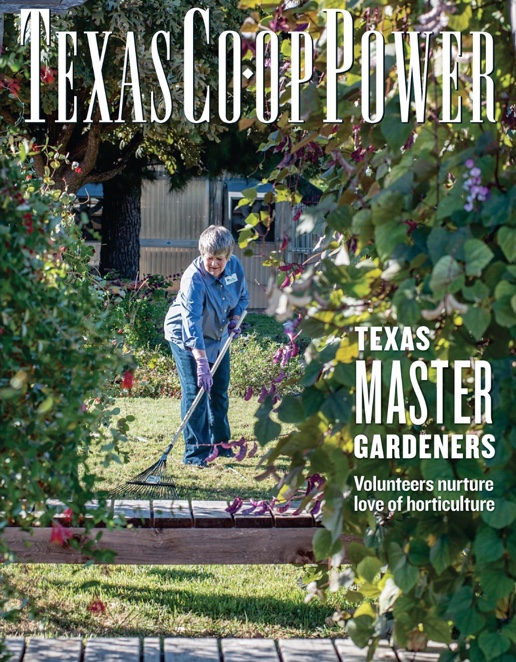Glen Rose Couple Finds Themselves in the Information
Superhighway’s Fast Lane after becoming
United’s 20,000th High-Speed Internet Subscribers
by
JOHN DAVIS
Her favorite tool is a black-handled paring knife.
Unremarkable at first glance, Margaret Drake’s knife might blend unnoticed into any kitchen drawer. And yet, in her studio, she releases a stunning creative magic with it when she grabs the handle.

As United’s 20,000th high-speed internet subscriber and award-winning Western bronze sculptor wields the blade against the oil-based clay, refined recreations of flexed muscles and furrowed brows come to life out of the initial wedges that she’s pressed onto a wire frame and smoothed with a stick.
Sculpting in bronze “is the classical method of portraying that fine art,” Margaret said about Western bronze sculpture. “It’s the best way, in my opinion, to express emotion and movement and detail in the work. And that is why it’s my medium of choice because of those reasons. That, and the fact that bronze is timeless. It’ll be here long after I’m gone.”
By using photos, the pages of history and her own imagination, she molds cowboys on horses, farmers in overalls, running buffalos and dancing Native Americans into existence. Once complete, set aside and then re-evaluated by her husband, Robert, and herself, they are refined some more before awaiting their turn to become immortalized into metal and punctuated with rich patina.
The pair works as a team. Margaret does the sculpting. Robert critiques and makes suggestions for final improvements. He’ll also build the stands, turntables or other woodworking required for display and does any heavy lifting. From start to finish, it’s about a 10-month process for each piece.
“As far as being a good bronze, it should be aesthetically pleasing, in my opinion,” she said. “And a lot of bronzes are not. People forget about that aspect in their interest in portraying the accuracy of some Western scene or something. They forget about the aesthetics that should be addressed as well. Now, if it’s figurative, it needs to be accurate in its representation of dimensions and proportions. If it’s active, you need to have, say for instance, the horse moving in an accurate position and not portrayed in an inaccurate way.”
Along with the old paring knife, the Drakes said they have recently discovered a new tool that works equally as well. After they became the 20,000th United high-speed internet subscribers, they said they’ve seen a marked improvement in the way they’re able to use the internet for business and pleasure.
“I just love high-speed internet,” Margaret said. “One of our main forms of entertainment is watching TV, and we would sit there for hours while the little circle went around and around before. Now it’s instantaneous. In the past when it rained, which maybe it’ll do someday again, we would lose our internet access because of the rain affecting the dish. I’m just very, very happy with it. I appreciate it.”
United is still one of a handful of Texas electric distribution cooperatives currently providing high-speed internet to members, according to the cooperative’s statewide trade association, Texas Electric Cooperatives. The majority of United’s service territory arguably lies within an internet desert, according to the National Broadband Needs Map drawn by the National Telecommunications and Information Administration.
United joined seven other co-ops that have achieved the 20,000 members mark for high-speed internet subscribers, according to the August Co-ops Connect Bulletin: Electric Cooperative Broadband News. Only two others are listed as having achieved 30,000 internet subscribers.
“We are so pleased to begin filling the internet void so many of our members have experienced for so long,” said Cameron Smallwood, United CEO. “On top of that, we have done so remarkably fast. This project exemplifies the very core of our existence, which was to bring a vital service available only in densely populated areas to rural people. Here we are, 85 years after bringing electricity to our area, doing the same thing again with high-speed internet.”
Building on Her Experience
As a child in Northwestern Colorado, Margaret said she loved to draw.
In particular, she studied the works of world-renowned Western painter and bronze sculptor, Frederic Remington, the 19th-century artist known best for his depictions of cowboys, Native Americans and the Old West.

Her part of Colorado also offered her glimpses of what remained of Remington’s world. Cowboys still rode herd on ranchlands. Her friends’ horses captivated her. Nearby Native American communities stoked her curiosity.
“I was in a small town in Colorado, and I was extremely horse crazy,” she said. “My ranching friends would let me go out with them, and we’d go riding. Eventually, I got my own horse. But I was just a horse-crazy girl. Also, up there in the extreme northwestern portion of Colorado, there is some Indian influence. I always had an interest in the Indians that had occupied the land before we were there.”
The couple met in college. Margaret spent time in the research department of the pharmaceutical industry developing clinical trials that would assist in getting new drugs approved by the Federal Drug Administration. These trials took her across the United States, she said, and they left little time for her to practice any art.
The Drakes became United members when they moved to Glen Rose in 1980 and bought a piece of raw land that they tamed by themselves. Robert worked as a probation officer and said it was a requirement of his employment that he move to Somervell County.
After retiring in 2008, she needed something to do.
“When I retired, I was able to devote some time to taking lessons,” she said. “On a whim, I started taking lessons from a gentleman in Granbury to learn how to sculpt. From there, the bug bit me and I have just branched off and done my own thing since then.”
Robert said he watched as Margaret learned as much as she could and began delving deeper into her craft. She attended multiple workshops at the Scottsdale Artist School in Arizona, known for offering week-long classes with some of the country’s best artists.
“I told her when she retired, she could do whatever she wanted,” he said. “And boy, did she dive right into the mix. She has become a terrific sculptor. The biggest thing is look to at the detail. Look at her detail, because it is tremendous. I feel sorry for the foundry because they’ve got to put all that detail in the finished product so that it’s wonderful.
“She’s one of the best in Texas. But I’m a little biased.”
On the day of the interview, Margaret stood perfecting the bodies of three pronghorn antelope. She cut small pieces of clay and worked them onto the body. Her eyes constantly scanned, assessing shape and form.
Before she pronounces a piece as finished, she inspects it to ensure it’s accurately portrayed from every angle. That’s when she turns to her husband of 45 years. She said she can always rely on Robert to offer a careful eye and an honest critique to catch something she may have missed.
“When she says ‘I’m through with it,’ I’ll say, ‘Well, let me look at it,’” Robert said. “I’ll have to go down and give a final approval. And there’s times when I say, ‘It’s not ready.’ Sometimes, you work so hard on a piece that your eye may not see certain things. So, you need a second pair of eyes. I’m just here to be that second pair of eyes. It’s worked out great. We’re a team. That’s what a marriage is. It’s teamwork.”
Once it passes the final inspection, the clay version is sent to the foundry to be reborn in metal.
High-Speed Business and Pleasure
Getting your work out there in the world is part of any artist’s job, and the internet is one of the major tools Margaret said she uses for her sculpting business.
“In the past, I’ve relied heavily on computers, not only for advertising but also for reference projects,” Margaret said. “I am obliged to keep a nice up-to-date website, and the use of the high-speed internet will be important in uploading large digital photos and things like that.”
Robert said he was impressed with the service he received after their system was installed.
“They came out to lay the cable, climb up the house, put in the system,” he said. “They are fantastic. They’re very, very nice. They talk to you straight away. You ask a question, and they answer it. Then they go about their business. So, I think one of the big things about United Co-op is that they have good employees.”
Clay Turner, United’s outside plant manager, oversees the building of the cooperative’s high-speed internet system. He said he’s proud of the progress United has made to reach 20,000 internet users in such a short period of time.
Providing United members like the Drakes with a quality internet experience is not only what Turner said his job is all about, it’s also the reward for the hard work he and the rest of the United employees put in every day.
“You know, there are hundreds of people, including multiple contractors and United employees, working on this project,” Turner said. “And it really took everybody working together to get us where we got as quickly as we did. We started in March 2020. In three and a half years, we built over 6,000 miles of fiber. We’ve connected over 20,000 members. It’s truly remarkable how quickly we’ve constructed this, and it’s working. It’s reliable.
“Everybody’s excited, and it’s really changing people’s lives. That’s probably one of the biggest takeaways I’ve personally gotten from this is just how much we’ve changed people’s lives.”


